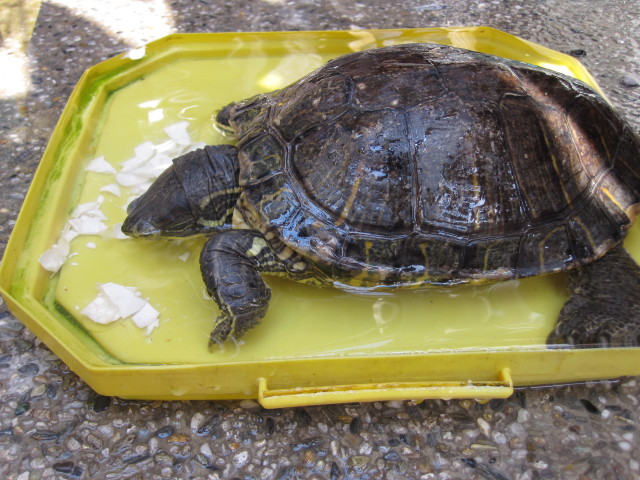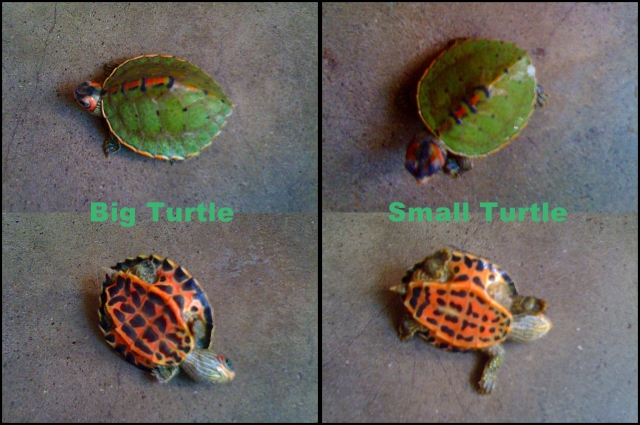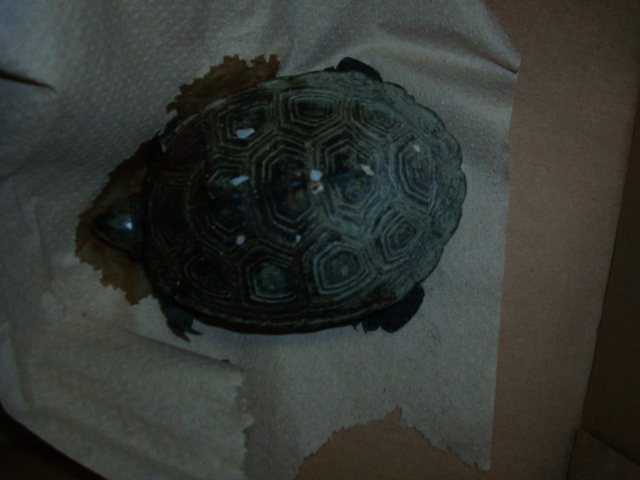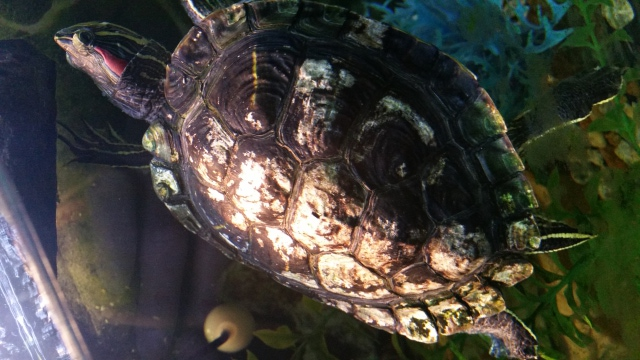QuestionI have two sliders in my back yard pond in northern California. One is a female, approximately 8" long and pretty heavy. The other one is a male about 4.5" long and frisky. They were both rescued from craigslist owners that didn't want them. The pond is a 100 gal poly hard liner with a 30 gal upper section for water plants (as turtles are hard on plants) and a large (2000 gal rated) bio-filter and UV filter. They is also a custom made 1400 watt element heater inline from the pump to waterfall that maintains the temp at around 70-72 degrees. In the pond are about 3 koi, 8 goldfish, water hyacinth, lilys, horsetails and water grass. They get fed turtle sticks, krill (they like alot) and the occasional snail or slug from the garden
The situation I have is this: The male seems to constantly follow or annoy the female. When I feed them, he will get in front of her, and pull both front claws close to his head and flicker his nails at her. He will ignore food to follow her and he will try to sniff her tail. Is this normal? Should I try to find a better home for him and get a second female? (My wife and I would prefer to keep the female as she is older and we have had her longer.) Do turtle of the same sex get along better.
(side note: The fish that are in pond all started as feeder fish that the turtles could not catch.)
AnswerThis is a classic courtship behavior. It can be either perfectly normal, or a sign of stress and/or aggression. It is hard to tell from this end- and can be tricky even for experts sometimes.
It is hard to be sure from your description, but the pool may be small for the two of them. We would normally figure about 10 gallons of actual water per inch of shell, so the 12.5" of turtles should be in about 125 gallons of water. Over-crowding is one of the more common reasons for aggression displays.
We also often see aggression with certain species (such as Red-ears), different sized turtles, wild vs. captive bred, new vs. old, etc. without a lot of solid 'which one is the bully' logic. (that is, the small one, new one, etc. is often the bully).
Now, as far as we can tell, the only two ways to deal with a bully turtle are to enlarge the habitat or separate the turtles.
Give the forums at http://www.turtleforum.com a try as well for some other ideas.
Good luck!

 obesity
Questionobesity
QUESTION: heres another picture
obesity
Questionobesity
QUESTION: heres another picture
 Russian turtle nesting
QuestionQUESTION: hello, we have one large female and 3
Russian turtle nesting
QuestionQUESTION: hello, we have one large female and 3
 Turtle Species
Question
My Turtles
Hello, I bought two small ha
Turtle Species
Question
My Turtles
Hello, I bought two small ha
 Injured wild turtle
Question
Turtle
Hello,
I found a wild turtle tha
Injured wild turtle
Question
Turtle
Hello,
I found a wild turtle tha
 Red Eared Slider - Shell problems
Question
Bowsers top Bowsers shell bottom
Red Eared Slider - Shell problems
Question
Bowsers top Bowsers shell bottom